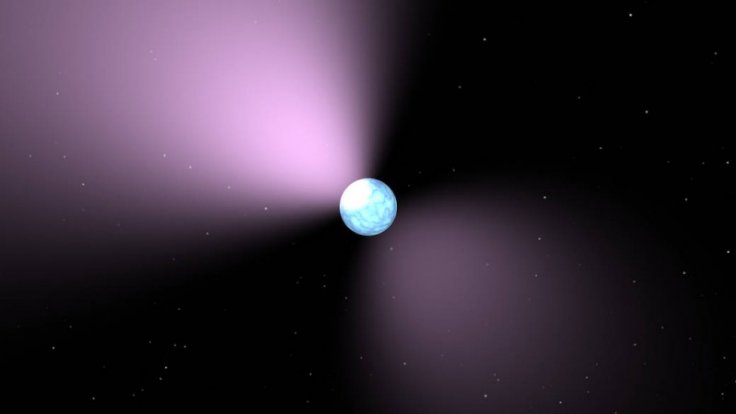
It may be possible to decipher ancient scrolls destroyed by the eruption of Mount Vesuvius on the Mediterranean coast in AD 79 by using a new x-ray technique, scientists have said.
Scientists at Britain's national synchrotron have harnessed powerful light beams to virtually unwrap and decipher a fine library of scrolls that were carbonized by the searing heat of ash and gas following the burial of the towns of Pompeii and Herculaneum about 2000 years ago.
The scientists in the process of deciphering the two complete scrolls and four fragments from the Herculaneum library – the only one surviving from antiquity -- hope to get new insights into the ancient world.
The scrolls constructed of papyrus – a plant native only to Egypt -- were examined at the Diamond Light Source facility in Oxfordshire, home to Britain's synchrotron -- a cyclotron in which the magnetic field strength increases with the particle's energy to produce light many times brighter than the sun.
"Although you can see on every flake of papyrus that there is writing, to open it up would require that papyrus be really limber and flexible," lead researcher and chair of computer science at the University of Kentucky Professor Brent Seales said, explaining the importance of texts from the ancient world, which are "rare and precious" and cannot be "revealed through any other known process".
Laurent Chapon, physical science director of Diamond Light Source, said the scientists planned to take a CT scanner like three-dimensional image of the scrolls to decipher them.
"We will shine a very intense light through the scroll, then detect on the other side a number of two-dimensional images, and from that reconstruct a three-dimensional volume of the object to actually read the text in a non-destructive manner," Chapon explained.
The scrolls, belonging to the Institut de France in Paris, are part of a collection of about 1,800 scrolls discovered during excavations of Herculaneum in 1752.
Experts believe the villa in which the scrolls were found belonged to the father-in-law of Julius Caesar, the Roman dictator assassinated in 44BC.
The ink on the scrolls is difficult to see even through a synchrotron, but scientists believe the density of the paper will be different where written characters are present and by scanning the fragments where characters are visible, they hope to create a machine-learning algorithm to decipher what is written on the scrolls.
Some of the scrolls were over the years destroyed when experts through various methods attempted to unroll about half of them.
Seales and his team previously used high-energy x-rays to unravel a 1700-year-old Hebrew parchment found in the holy ark of a synagogue in En-Gedi in Israel. The parchment contained text from the biblical book of Leviticus.
While the En-Gedi scroll contained a metal-based ink showing up in x-ray data, the Herculaneum scrolls one is charcoal or soot made carbon-based ink.
"We hope to perfect the technology so that we can simply repeat it on all 900 scrolls that remain unwrapped," said Seales.
"For the most part the writings in opened scrolls are Greek philosophy around Epicureanism, which was a prevailing philosophy of the day," The Guardian quoted Seales as suggesting.
He added there was a possibility the scrolls contained Latin text as a small proportion of Herculaneum scrolls had been found to be in Latin.









